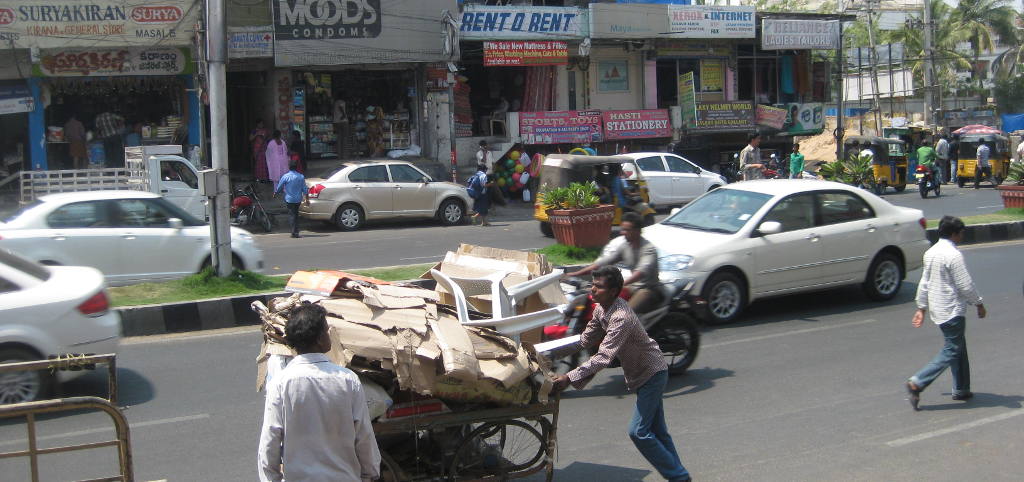CHAI Project Develops the First Model Designed to Measure Air Pollution in Rural India
Researchers use models based on land-use data to predict exposure to fine particulate matter and black carbon in South India
07.05.2018
Of the more than three million premature deaths attributed to air pollution every year, 87% occur in low- and middle-income countries. Despite this fact, most scientific studies on the health effects of air pollution are carried out in urban areas in high-income countries. In order to contribute to remedying this imbalance, an international team led by the Barcelona Institute for Global Health (ISGlobal), a centre supported by the ”la Caixa” Banking Foundation, has designed a model to predict exposure to air pollution in a rural area in South India.
The CHAI project, coordinated by ISGlobal, used land-use regression models (LUR)—a method often used in urban areas in high-income countries—to predict levels of fine particulate matter (suspended particles with a diameter of 2.5 μm or less) and black carbon in a rural area close to the city of Hyderabad in India. The ISGlobal researcher Margaux Sanchez, lead author of the study, draws attention to the fact that “this is the first time this method has been used to predict air pollution in a rural area in India”.
The study, published in Science of the Total Environment, predicted air pollution levels on the basis of measurements made across the area to obtain reference data on concentrations of fine particles and black carbon. Sample measurements were obtained from 23 sites in 16 villages using monitors installed on the rooftops of houses for a total of 21 days in two different seasons.
The researchers then developed a model that took into account factors such as road length, density of the built-environment, population density, and the presence of industrial sites and green spaces. As it is difficult to obtain land-use data in a country like India, the model combined satellite imagery with a land-use map created specifically for the project by a field team who surveyed the study area on the ground. The resulting model predicted 58% and 79% of the spatial variability of fine particulate matter and black carbon concentrations in the area, a result characterized by the research team as “moderate to good”. The results are similar to those obtained using the same statistical method in cities in high-income countries.
ISGlobal researcher Cathryn Tonne, coordinator of the study and the CHAI Project, highlights certain particulars of the area: “Despite the absence of large volumes of road traffic in the study area, the air quality is poor and concentrations of fine particulate matter exceed the maximum level recommended by the World Health Organisation (WHO). These high concentrations are mainly due to pollution from regional sources. Industrial activity and the use of biomass fuels in kitchens and households are the main sources of local pollution, contributing about one-quarter of the air pollution observed.”
She goes on to emphasise that “there is a huge gap in the epidemiological data on exposure to air pollution in low- and middle-income countries. To address this problem, it is essential to develop and apply prediction models for these zones so that we can measure the impact of air pollution on the health of these populations. The findings of this study show that the LUR model is a valuable tool for predicting air pollution in rural areas of low- and middle-income countries”.
Reference
Margaux Sanchez, Albert Ambros, Carles Milà, Maëlle Salmon, Kalpana Balakrishnan, Sankar Sambandam, V. Sreekanth, Julian D. Marshall, Cathryn Tonne. Development of land-use regression models for fine particles and black carbon in peri-urban South India. Science of The Total Environment. April 2018. https://doi.org/10.1016/j.scitotenv.2018.03.308



